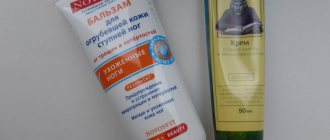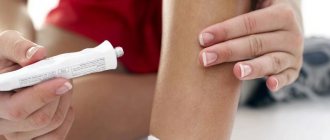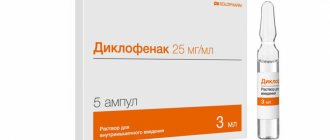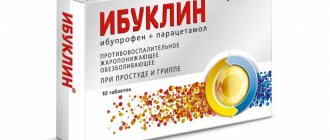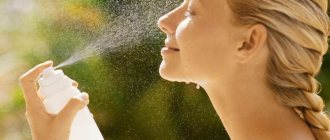Atopic dermatitis (AD) in children is one of the most common diseases of young children. This disease is an allergic inflammation of the skin, which is characterized by itching, as well as frequent relapses and age-related characteristics of the skin rash. As a rule, dermatitis appears at an early age; if left untreated, it continues to progress into older age, which significantly worsens the quality of life of patients and their families.
For the development of this pathology, a hereditary predisposition to the development of allergies is of great importance. Therefore, this disease is often combined with other forms of allergies, for example, bronchial asthma, allergic conjunctivitis and rhinitis, food allergies. There is such a thing as “atopic march” . Atopic march is a natural progression of allergic diseases. As a rule, it all starts with a food allergy, which often gives impetus to the development of atopic dermatitis. In the absence of adequate treatment, the march progresses. Over time, the child develops allergic rhinitis. Over time, a more dangerous, in some cases, life-threatening condition arises - bronchial asthma.
Causes of allergies and types of rashes
There are many causes of allergies, the main ones being:
- food products (chicken protein, fish, seafood, cow's milk, citrus fruits, chocolate, nuts and many others);
- chemical detergents and cleaners;
- medications;
- household dust;
- pets (their fur, fluff, saliva);
- insect bites;
- helminth infestations (parasitic worms provoke allergic reactions in humans);
- environmental factors - cold, frost, sun;
- physical procedures associated with current (the cause of a rare form of allergy to physical activity and current).
Allergies often manifest themselves in the form of red, scaly spots that can be located on any part of the body surface.
Main types of rashes:
- Urticaria: rashes in the form of blisters, often multiple, can be located on any part of the body. Accompanied by redness, itching, local swelling. They usually go away within a day. Quincke's edema (swelling of the deep layers of the dermis and subcutaneous fatty tissue) of the upper respiratory tract often develops along with urticaria.
- Atopic dermatitis: The rash in adults is usually localized on the flexor surfaces of the arms and legs, on the back of the neck and behind the ears. The lesions are accompanied by redness, itching, and crust formation.
- Contact dermatitis: the cause is direct contact of the allergen with the skin, therefore it mainly occurs on the hands. The affected area exhibits hyperemia, weeping, swelling, and itching.
- Eczema can be localized on any part of the body, but most often it is the face and hands. It presents as hyperemic areas of the skin with severe swelling and multiple blisters.
Prevalence of atopic dermatitis in children
It is safe to say that this disease can occur in any country, in both males and females. Dermatitis occurs in different age categories. The prevalence of AD is higher in residents of economically developed countries, which may be due to the urban lifestyle of this population. According to the protocol for the treatment of AD in children, the prevalence of this pathology in the Russian Federation ranges from 6 to 15% according to ISSAC. ISAAC is a standardized epidemiological study - the International Study of Asthma and Allergy in Childhood. Repeated studies within the framework of this program show a significant increase in the prevalence of AD in children of the Russian Federation.
Research shows a significant increase in the prevalence of atopic dermatitis in children in the Russian Federation.
Also, the expert committee on asthma and allergy of the WHO European Bureau developed and approved another program - GA2LEN. GA2LEN (Global Allergy and Asthma European Network) studied the incidence of allergic pathology among adolescents aged 15 to 18 years. According to the study, the presence of symptoms of AD occurred in 33% of adolescents, the prevalence of AD according to questionnaires was 10%, and a confirmed diagnosis was found in 7% of adolescents. Girls have 1.5 times more than boys.
Rules for using hormonal ointments:
- Before use, be sure to consult your doctor. All drugs have contraindications and restrictions for use.
- Follow the dosage and frequency of application exactly. If exceeded, adverse reactions quickly develop
- Use hormonal ointments if necessary. There are safer means.
- Possible side effects from hormonal ointments, especially with long-term use - skin atrophy, the appearance of pustules against the background of reduced immunity, increased blood glucose, decreased adrenal gland performance, stretch marks, baldness, fungal infection. If they appear, consult your doctor immediately.
- Avoid contact with eyes and other mucous membranes. Rinse with plenty of water and if discomfort persists, visit a doctor.
- When applying, lubricate only the affected area, avoiding healthy skin. Otherwise, the opposite effect is possible in the form of skin redness and swelling.
- .The ointment requires gradual withdrawal. Do not suddenly stop using it - side effects and worsening of the underlying disease are possible.
Effect of antihistamine creams
Creams for relieving allergy symptoms have the following effects on the skin:
eliminate skin irritations;- make the rash less active and promote its healing;
- restore affected areas of the epidermis;
- soften and moisturize the skin;
- help cope with peeling and a feeling of tightness;
- reduce swelling;
- relieve discomfort and improve overall well-being.
The action of such drugs is aimed primarily at blocking the synthesis of substances that produce antibodies. The effect of using antihistamine ointment prevents further development of the disease and aggravation of symptoms.
To maximize the effect of using such a product, it should be selected correctly. It is best if the cream is prescribed by a doctor, based on your individual characteristics and type of allergic reaction.
Non-hormonal ointments
Non-hormonal ointments for adults for skin allergies have a mild, gentle effect; there is no systemic effect on the body.
Non-hormonal drugs will not cope with severe and chronic types of allergic dermatoses.
Psilo-balm (diphenhydramine)
Apply 2-3 g to the affected areas 3-4 times a day. Action: antihistamine, antipruritic, local anesthetic, cooling.
Indications: itching and irritation of the skin due to allergic dermatitis, insect bites.
During pregnancy: allowed as prescribed by a doctor. Use during lactation is undesirable.
Average price: 267 rub.
Fenistil (dimetindene)
Application: topically 2-4 times a day. After applying to large areas, avoid direct sunlight. Action: antipruritic, antiallergic, decongestant, antihistamine.
Indications: skin itching due to allergic dermatoses, insect bites.
Pregnancy: 1st trimester – permissible as prescribed by a doctor. II-III trimesters and lactation period - do not use for the treatment of extensive foci of allergies.
Average price: 362 rub.
Protopic (tacrolimus)
Treatment begins with 0.1% ointment, which is applied 2 times a day. If improvement occurs, you can reduce the frequency of application or switch to a 0.03% ointment dosage. Suitable for both short-term and long-term use. Can be used on the face, except eyes and mucous membranes.
Action: anti-inflammatory.
Indications: atopic dermatitis (moderate and severe forms) when other ointments against allergies are ineffective.
Pregnancy: contraindicated.
Average price: 678 rub.
Soventol (bamipin)
Apply a thin layer to the affected area; re-application is possible after 30 minutes.
Action: antipruritic, antiallergic.
Indications: allergic itching (urticaria, insect bites, eczema and other allergic skin manifestations), minor burns and frostbite.
Pregnancy and lactation: with caution.
Average price: 1010 rub.
Elidel (pimecrolimus)
Application: 2 times a day with an interval of 12 hours. Suitable for long-term use. Can be applied to the face, except eyes and mucous membranes.
Action: anti-inflammatory.
Indications: atopic dermatitis.
Pregnancy: with caution.
Average price: 986 rub.
Zinc ointment (zinc oxide)
Application 2-3 times a day. Can be applied to the face except eyes.
Action: anti-inflammatory, disinfecting, drying.
Indications: allergic dermatitis and eczema.
Pregnancy: no restrictions.
Average price: 36 rub.
Bibliography
- [1] Sergeev Yu.V. Allergy to materials used in orthopedic dentistry [Text] / Yu.V. Sergeev, T.P. Guseva // Attending physician. – 2004 – No. 3. – 38-41 s.
- [2] Allergology. Clinical recommendations developed by the RAACI Working Group / ed. R. M. Khaitova. – M.: Farmarus Print Media, 2013. – p. 126 p.
- [3] Agafonova V.A. Study of antihistamines of 3 generations: materials of the V student international correspondence scientific and practical conference “Scientific community of students of the 21st century. Natural Sciences” / V.A. Agafonova, Yudicheva K.V. – M.: publishing house Siberian Association of Consultants, 2012. – 322 p.
- [4] Korsunskaya I.M. Skin itching: what you should think about / I.M. Korsunskaya, E.V. Dvoryankova, K.T. Plieva [etc.] // Effective pharmacotherapy. – 2015. – No. 45. – 14-18 s.
- [5] Instructions for use of the medicinal product for medical use Cetrin®. – Registration number: P N013283/01.
Hormonal drugs
Most effective for treating allergic red spots.
They are divided into 4 classes.
| Class | Effect | Drugs |
| I | They have a short-term effect and slowly penetrate the skin. | "Hydrocortisone" |
| II | They have a moderate effect on inflammatory skin processes, the effect is also quite slow. | "Prednisolone", "Desoxymethasone", "Lorinden", "Afloderm" |
| III | Quickly and effectively relieve inflammation, itching, and irritation. | "Elokom", "Celestoderm", "Sinaflamm", "Apulein" |
| IV | They penetrate deeply and quickly into cells and have a powerful anti-inflammatory and anti-allergic effect. | "Galcinonide", "Dermovate" |
Despite their high effectiveness, hormonal drugs can cause serious side effects, especially with long-term treatment.
Hormonal ointments rarely cause systemic complications such as diabetes, weight gain, and menstrual irregularities. This is possible either with increased sensitivity to the drug, or with a significant excess of the daily dosage. Most often, complications are local in nature and are manifested by fungal infection of the area where the ointment is applied.
Victoria Druzhikina
Neurologist, Therapist
Most hormonal ointments have a very similar mechanism of action and main indications, so you can combine them:
- Action: anti-inflammatory, antipruritic, antiallergic, decongestant.
- Indications: eczema, neurodermatitis, atopic dermatitis and other allergic dermatitis.
- Pregnancy and lactation: use only when absolutely necessary as prescribed by a doctor for short-term courses. During lactation, do not apply to the mammary glands.
Hydrocortisone
Quickly helps relieve itching and swelling. Penetrates deep into tissues and, with prolonged use, has a systemic effect. The effect lasts no more than 4 hours, so it requires 2-3 applications. Price – 35 rubles.
Prednisolone
Antiallergic, antipruritic, anti-inflammatory effect occurs quickly, works longer - up to 8 hours, applied 1-2, less than 3 times a day for 1-2 weeks. With prolonged use, skin atrophy is possible. Price - 30 rubles.
Elokom
The drug is based on mometasone. Apply 1 r/day. Helps with dermatitis and insect bites. The ointment is greasy and stains clothes. Price – 80 rubles
Elokom-S
In addition to mometasone, the composition includes salicylic acid, which dissolves rough scales, softening and cleansing the skin during peeling. Used 2 times a day for atopic, seborrheic dermatitis, psoriasis. The drug cannot be used for herpetic rashes and pustular lesions. Price – 780 rubles.
Advantan
Methylprednisolone drug. Wide spectrum of action. It helps well with insect bites, can be used in children from 4 months. Apply 1 time per day. The duration of use of the ointment is limited to 12 weeks in adults and 4 weeks in children. Price – 500 rubles.
Celestoderm
Active ingredient: betamethasone. It is used in pediatrics from 6 months, but produces side effects such as increased intracranial pressure, increased blood sugar, and adrenal suppression. Duration of use 1-3 times a day, lightly rubbing, duration of treatment up to 4 weeks. Price – 250 rubles.
Doctor's advice
If an allergy occurs, first of all you need to avoid contact with the allergen. Not only cream or ointment is important in treatment, but also following a hypoallergenic diet. Nuts, citruses, chocolate, chicken, cheese, eggs, fish, as well as all yellow, orange or red foods (carrots, beets, tomatoes, yellow apples and pears, watermelons, etc.) are excluded from the diet. This is done regardless of whether you have food intolerances or not. The above products help increase the level of histamine in the blood. Histamine is a chemical that triggers and maintains an allergic reaction. Therefore, it is important to follow a diet for 5-7 days, but if the process continues, then continue to limit your diet. For long-term eczema and dermatitis, each product is introduced gradually, separately from the others, and possible skin reactions are monitored.
Victoria Druzhikina Neurologist, Therapist
Lorinden-S
In addition to the hormone, Flumethasone contains the antiseptic clioquinol, which has an antimicrobial effect, so use is possible for impetigo, infectious dermatitis, as well as when a bacterial infection is associated with another type of dermatitis. Approved for use in pregnant women. Not for skin cancer. Price – 435 rubles.
Sinaflan
Fluocinolone contains acetonide. It also has an anti-edematous, drying effect. No more than 3 times a day; if improvement occurs, reduce the number of applications to 1-2 times a day. The duration of treatment is no more than 2 weeks. For hyperkeratosis, the ointment is used with an occlusive dressing once a day or twice for no more than 1 week. Price – 70 rubles.
Advantages of 2nd generation AGP:
- prolonged action (one dose of 5-10 mg of the active substance is designed for 12-24 hours, in contrast to the 3-5 hours of action of the 1st generation AGP);
- ease of use, only 1 tablet per day
- absence of delayed reaction, impairment of mental activity, drowsiness is also minimized;
- lack of addiction;
- during treatment there is the possibility of increasing the dose and time of administration;
- the possibility of taking the drug for people with pathologies of the gastrointestinal tract, cardiovascular system and glaucoma.
Here you can select drugs based on:
- Cetirizine;
- Ebastina;
- Levocetirizine;
- Desloratadine;
- Fexofenadine.
RAAKI [2] and the American Society of Allergists recommend the use of 1st generation antihistamines only in cases where it is impossible to use 2nd generation antihistamines. The most prominent representative of the latest generation of antihistamines is cetirizine. In terms of sales volume in the pharmacological market in Russia, as well as in terms of prescription among specialists, Cetrizine No. 1 is the drug Cetrin®[3].
Comparison table of ointments
| Name of ointment | Application | Additional effect | Average price (RUB) |
| "Hydrocortisone | For lesions 1-3 times per day. | 32 | |
| "Prednisolone" | 1-3 times a day, course 8-14 days. | 27 | |
| "Elocom" (mometasone) | 1 time per day, the duration of treatment is individual and determined by the doctor. | Good for itching and irritation of the skin. | 370 |
| "Elocom-S" (+ salicylic acid) | 2 times a day, daily dose no more than 15 g. | Gives a keratolytic effect. Helps with allergic dermatitis accompanied by hyperkeratosis (atopic dermatitis, seborrheic dermatitis). Hyperkeratosis is an excessive division of epidermal cells with impaired desquamation, leading to thickening of the skin. | 663 |
| Advantan (methylprednisolone) | 1 r/d. The duration of use should not exceed 12 weeks, and when using an emulsion - 2 weeks. | 550 | |
| "Celestoderm" (betamethasone) | Lightly rubbing 1-3 times a day, treatment duration up to 4 weeks. | 232 | |
| "Lorinden-S" (flumethasone, clioquinol) | No more than 3 times a day; if improvement occurs, reduce the number of applications to 1-2 times a day. The duration of treatment is no more than 2 weeks. For hyperkeratosis, the ointment is used with an occlusive dressing once a day or twice for no more than 1 week. | Plus antimicrobial and antifungal effect. Used for allergic dermatoses with associated bacterial or fungal infection. | 376 |
Bathing
After a light shower to thoroughly cleanse your entire body, apply Atopic Bathing Gel to damp skin from head to toe, massage lightly and rinse thoroughly. Dry your baby with a soft towel using blotting, but not rubbing, movements. After water treatments, apply Atopic skin softening cream for daily care. Apply it several times throughout the day: after washing your hands and washing your face.
When taking a bath, the water temperature should not exceed 36 degrees. Place your child in the water and offer him toys or other entertainment. After 5-7 minutes, apply Atopic Bathing Gel from head to toe and rinse well. After bathing, use Atopic cream for daily care, and if itching bothers you, let the cream absorb, and then treat the affected skin with an anti-itching drug.
Ointments for allergies on the face, including the eye area
| Application | Indications | Average price (RUB) | |
| "Dex-gentamicin" (dexamethasone, gentamicin) | A small amount is placed in the conjunctival sac 1 to 4 times a day. If improvement occurs, gradually reduce the frequency to 1 per day. | Inflammatory eye diseases | 142 |
| "Hydrocortisone" | Injected directly from the tube into the conjunctival sac 1-3 times a day. | Allergic conjunctivitis | 16 |
In some cases, doctors prescribe ointments such as Advantan, Celestoderm-B, and Lorinden-S for allergies on the skin of the face and eye area. These drugs are applied to the eyelids and around the eyes, avoiding contact with the conjunctiva. They should be used very carefully, in short courses, strictly under the supervision of a doctor (the development of glaucoma is possible).
Non-hormonal allergy medications for use on the face (except eyes) include Zinc Ointment, Elidel, and Protopic.
Classification
Antihistamine ointments are prescribed by a dermatologist or allergist to patients who have symptoms of skin allergies. Moreover, most drugs in this group are approved for use in children, adult men and women, as well as elderly patients. The table below describes in detail the classification types of antihistamine ointments.
| Classification of antihistamine ointments | Characteristics of drugs |
| Hormonal | Hormonal-based antihistamine ointments are drug therapy, the active components of which are synthetic hormones and glucocorticosteroids. Biochemical substances of this type are produced by the adrenal glands. The mechanism of action of hormonal-based antihistamine ointments is that they activate protein and carbohydrate metabolism. This ensures not only a decrease in histamine levels, but also a more rapid suppression of the inflammatory process, elimination of signs of hyperemia of the skin, and restoration of damaged tissues. The main disadvantage of medications in this category is the presence of a large number of side effects. Antihistamine ointments containing glucocorticosteroids are contraindicated for use for a long period of time. Most of these drugs are prohibited for use in the treatment of children and pregnant women. |
| Non-hormonal | Non-hormonal antihistamine ointments are considered safer for the human body. This group of drugs contains natural or chemical components that eliminate the symptoms of skin allergies. Patients who seek medical help with signs of redness, swelling, and itching of the skin are prescribed non-hormonal antihistamine ointments. In the absence of a therapeutic effect, more potent drugs that contain glucocorticosteroids are used. |
Hormonal and non-hormonal antihistamine ointments are used as prescribed by the attending physician after undergoing a preliminary examination. Only a doctor can determine the advisability of using ointment preparations of a specific pharmacological group.
https://www.youtube.com/watch?v=aOKYr2ekfMA
Products suitable for pregnant women
There are quite a few ointments for skin allergies allowed during pregnancy. For most drugs, the instructions indicate that it should be used with caution, only as prescribed by a doctor, and some drugs are completely contraindicated.
But there are drugs that are absolutely safe to use for a baby:
- “Zinc paste” - described above.
- “Bepanten”, “Solcoseryl”, “Panthenol” - do not have a direct anti-allergic effect, but have a regenerating, softening, moisturizing and anti-inflammatory effect.
Here is not a complete list of ointments against skin allergies, but only some popular representatives. It is not recommended to prescribe such medications on your own, especially if you are experiencing the disease for the first time. Only a doctor, after a full examination, will be able to prescribe a full treatment, which will include, among other things, local therapy.
If you still have questions, ask your allergist-immunologist.
This article has been verified by a current qualified physician, Victoria Druzhikina, and can be considered a reliable source of information for site users.
Bibliography
1. https://www.rosminzdrav.ru/documents/9159-poryadok-okazaniya-meditsinskoy-pomoschi-naseleniyu-po-profilyu-allergologiya-i-immunologiya-utv-prikazom-ministerstva-zdravoohraneniya-rossiyskoy-federatsii-ot- 7-noyabrya-2012-g-606n
Rate how helpful this article was
4.6 49 people voted, average rating 4.6
Did you like the article? Save it to your wall so you don’t lose it!
We give antihistamine in syrup. It seems that the child’s rash has appeared/increased...
Is it possible. Stop the antihistamine syrup for children and start giving the drug in drops or tablets, ideally a different one, but you can try the same one. A true allergy to antihistamines is rare - a little more than a hundred confirmed cases have been described in the literature over the past 60 years, although, of course, not every case is published and not every case even requires a visit to a doctor. An allergic or pseudo-allergic reaction to the numerous components of the syrup, designed to make its use pleasant, is more likely. By the way, manufacturers indicate “individual intolerance to components” in “contraindications”, but this intolerance is revealed only experimentally.
Note from the editor: mark “rec.!” means a drug of which all or most of the trade names are available with a prescription. Other drugs may be prescription drugs depending on the form and brand name.

